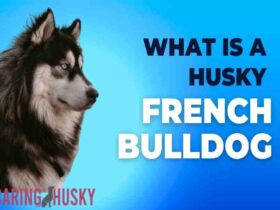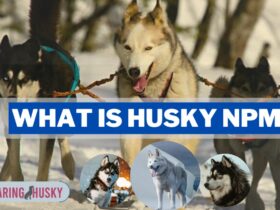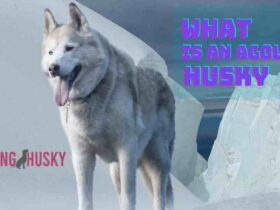The Siberian Husky, known for its striking appearance and resilience in harsh Arctic conditions, owes much of its fame to its unique coat. This article delves into the fascinating world of Husky coats, revealing their aesthetic appeal and functional significance. Understanding the complexity and purpose of the Husky’s coat is essential for any Husky owner or enthusiast. This exploration will take us through the layers of their coat, its maintenance, and the common misconceptions surrounding it.
How Many Coats Do Huskies Have?
Huskies have a double coat consisting of two distinct layers of fur. The inner layer, known as the undercoat, is soft and dense, providing insulation and warmth in cold weather. The outer layer, or topcoat, consists of longer guard hairs that protect against elements like UV rays and moisture. This unique double coat helps Huskies adapt to a wide range of temperatures, making them well-suited for icy winters and warmer climates. It’s a remarkable feature that sets them apart and contributes to their resilience in various weather conditions.
Anatomy Of A Husky’s Coat
The Siberian Husky’s coat is a fascinating example of nature’s ingenuity adapting to harsh climates. At its core, the anatomy of a Husky’s coat is centered around its double-layered structure, which is crucial for the breed’s survival in extreme weather conditions.
The inner layer, or the undercoat, is dense, soft, and fluffy. Composed of short hairs, this layer is primarily designed for insulation. During the cold winter, it traps body heat, acting as a thermal layer to keep the Husky warm in frigid temperatures. This undercoat is shed during the spring, known as the “blowing coat,” where Huskies lose significant amounts of fur to prepare for warmer weather.
The outer layer, or the topcoat, consists of longer, straight hairs known as guard hairs. This layer is what gives the Husky its distinctive, rugged appearance. The guard hairs are more than just aesthetically pleasing; they serve several critical functions. Firstly, they shield against UV rays, protecting the Husky from sunburn and overheating during sunnier days. Secondly, this layer is water-resistant, helping the Husky stay dry in snow or rain. The guard hairs also help to keep dirt and debris away from the skin.
Together, these two layers create a coat that is not only beautiful but highly functional. It’s a perfect adaptation for a breed originating in the harsh Siberian Arctic, where temperatures can plummet, and conditions can become challenging. The Husky’s coat also requires specific grooming techniques to maintain its health and functionality, such as regular brushing to remove dead hair and prevent matting, especially during the shedding season. This coat is a crucial reason Huskies are so well-loved, embodying this remarkable breed’s beauty and resilience.
Functions Of The Husky’s Double Coat
The double coat of a Husky serves various essential functions for the breed’s well-being and adaptability to different climates. Understanding these functions is crucial for Husky owners to care for their furry companions properly. Here are the primary functions of the Husky’s double coat:
Insulation Against Cold Weather: The dense undercoat of a Husky acts as a natural insulator. It traps warm air near the dog’s body, providing excellent thermal protection in cold conditions. This insulation is essential for Huskies, as they originated in Siberia, where temperatures can drop dramatically.
Protection from Extreme Temperatures: The double coat is effective in keeping Huskies warm in winter and helps regulate their body temperature in warmer weather. In hot climates, the reflective properties of the topcoat help keep the dog cool by preventing excessive heat absorption.
Water-Resistant Barrier: The outer layer of guard hairs serves as a water-resistant barrier. This protection is precious in wet and snowy conditions, as it prevents moisture from reaching the skin. It keeps Huskies dry, even when exposed to rain or snow for extended periods.
Shield from UV Rays: The guard hairs also act as a natural shield against harmful sun rays. This protection is vital, as Huskies have pale skin, making them susceptible to sunburn. The top coat helps to reduce the risk of sunburn and related skin issues.
Dirt and Debris Repellent: The long guard hairs not only keep moisture away but also help to repel dirt, debris, and foreign objects from reaching the skin. This function keeps the coat cleaner and minimizes the risk of skin irritations.
Adaptability to Seasonal Changes: Huskies undergo seasonal shedding, where they shed their undercoat to prepare for warmer weather. This shedding process helps them adapt to seasonal changes effectively. While it may seem excessive, it’s a natural way for Huskies to regulate their body temperature.
Natural Camouflage: In their native habitat, the Husky’s coat provides natural camouflage, helping them blend into their surroundings. This feature is beneficial for hunting and avoiding predators.
Comfort and Health: A well-maintained double coat contributes to the overall comfort and health of the Husky. Proper grooming and care, including regular brushing and occasional bathing, are essential to keep the coat in good condition.
The Grooming And Maintenance Of Huskey
Grooming and maintenance of a Husky’s double coat require careful attention to ensure the dog’s health and well-being while keeping their coat in optimal condition. Here’s a detailed overview of the grooming and maintenance practices for Huskies:
Regular Brushing:
Huskies tend to shed, particularly during seasonal changes. Regular brushing removes loose and dead hair from their dense undercoat and prevents matting. A slicker brush or an undercoat rake is ideal for this purpose. Daily brushing can significantly reduce the amount of loose fur in the home during shedding seasons.
Bathing:
Huskies are generally clean dogs and do not require frequent baths. Excessive bathing can strip their coat of natural oils, leading to dryness and skin issues. Bathing should be done only when necessary, such as when they get dirty or have a strong odor. Use a mild, dog-specific shampoo and ensure thorough rinsing to avoid residue.
Managing Shedding:
Shedding can be substantial in Huskies, especially during the change of seasons. Consider using a de-shedding tool or a high-velocity dryer during grooming sessions to manage shedding. This helps remove loose hair more effectively and reduces the amount of fur shed around the home.
Nail Trimming:
Regular nail trimming is essential for Huskies to prevent overgrown nails, which can be uncomfortable for the dog and lead to joint issues. If you need more confidence in trimming your nails yourself, consider seeking the assistance of a professional groomer or veterinarian.
Ear and Eye Cleaning:
Regularly check and clean your Husky’s ears to prevent wax buildup and infections. Similarly, watch their eyes for any signs of irritation or discharge. Use a damp, clean cloth or a vet-approved solution for gentle cleaning.
Frequent Checks for Mats and Tangles:
Inspect your Husky’s coat regularly for mats, tangles, or foreign objects like burrs. These can be uncomfortable for the dog and lead to skin issues if left unaddressed.
Professional Grooming:
While Huskies are generally low-maintenance in grooming, some owners opt for professional grooming services for specific needs, such as trimming the fur between their paw pads or for a more thorough grooming session during heavy shedding seasons.
Conclusion
The Siberian Husky’s coat is a marvel of nature, designed to withstand the rigors of extreme climates. Its double layer, comprising a dense undercoat and a protective topcoat, plays a crucial role in the dog’s ability to adapt to varying temperatures. This article has explored the structure, function, and maintenance of the Husky’s unique coat, shedding light on the importance of proper care for their well-being. For Husky owners and admirers, recognizing and respecting the complexity of their coats is critical to ensuring these majestic animals lead healthy, comfortable lives.
FAQ’s
What is the rarest husky color?
The rarest Husky color is often considered to be the pure white coat. While Huskies come in various coat colors, including black, gray, red, and agouti, pure white is less common. This striking color is highly sought after by Husky enthusiasts and breeders, making it relatively rare compared to other coat variations. However, rarity can vary depending on geographic regions and breeding practices.
Do huskies shed a lot of fur?
Yes, Huskies are known for shedding a significant amount of fur. They have a double coat, which means they shed their dense undercoat and longer topcoat. Shedding typically increases during seasonal changes, commonly known as “blowing coat.” Regular grooming and brushing can help manage shedding, but it’s important to be prepared for a Husky’s consistent fur loss, especially if you’re considering owning one.
Will Husky hair grow back?
Yes, Husky hair will grow back after shedding. Huskies undergo a natural shedding process, losing their old fur for new growth. The time it takes for their hair to grow back varies from individual to individual and depends on factors like their health, diet, and grooming practices. Regular brushing and a healthy diet can promote the growth of a new, healthy coat in Huskies.






Leave a Reply